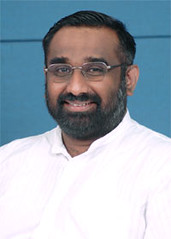(This is a guest post by Mugdha Vairagade, a Senior Technical Writer based in Pune. Last year, as part of the techstart.in initiative we had organized a mentorship/industry projects program for engineering students without jobs (or whose jobs had been deferred). In this program, Mugdha pointed out that technical writing is an equally lucrative career for engineering students, and offered to provide mentorship for anyone interested. She took on a small number of students for mentoring, and all of them now have jobs in this area. We asked Mugdha to give PuneTech readers an overview of what Technical Writing as a career means, what skills are necessary, and how to go about preparing for a job in this area.)
Are you a Computer Science/Engineering undergrad? Or, have you graduated and are looking for alternatives to the usual Software Development or Testing career paths? If yes, have you considered technical writing as a possible career option? Chances are, you havenât; because you donât know enough about technical writing.

People still know so little about technical writing that they miss out on the lucrative job opportunities this profession provides. In this piece, I try to explain what technical writing is all about, and why you should consider this as a career option.
As organizations have started recognizing the need and importance of technical documentation, the demand for technical writers with all experience levels have gone up. The demand for technical writers, and consequently the pay packages, are now at par with (or even better than) that of the Software Development or Testing professionals.
Sounds like a cool career option? You want to know more about technical writing? Let’s start by finding out who these technical writers are and what they do.
Technical Writers are known by different names in different organizations; such as technical communicators, software documentation experts, or information developers.
A technical writer must have two important characteristics:
- Strong technical background – That’s obvious, considering that a technical writer must understand complex technical concepts, applications, or services to be able to document them. For example, OSS/BSS systems, genomic-analysis application, or even web-services for airline reservation systems.
You as a Computer Science/Engineering student have an edge over aspirants with different academic background in this regard, as you already have good exposure to technology. - Writing skills – Yes, a technical writer must have excellent command over written English. And that is plain business English, understandable by a global audience. So you are not expected to write in ornate or literary style, but in a simple concise one.
Also, you must be able to edit your own and othersâ work to ensure simplicity, conciseness, and usefulness of the technical documentation. There are clearly-defined standards like Microsoft® Manual of Style for Technical Publications and The Chicago Manual of Style to help you learn how to write and edit a technical documentation.
And of course, you must enjoy writing!
The typical job responsibility of a technical writer is writing software documentation; although technical writing can also involve hardware documentation and training program development. Some real-world examples of software/hardware documentation are:
- Context-sensitive help for a desktop applications (accessed by pressing F1),
- Administration Guide for a server
- FAQ pages for a social-networking website
- Online help for an image editor
- User manual for a cell phone
- Troubleshooting manual for ATM machines
- and more..
To write software documentation, a technical writer first needs to study the corresponding software, and find out who are the intended audience for the documentation. The technical writer does so by interacting with the software (if possible), study function designs and developer documentation, and interview Subject Matter Experts (SMEs).
Then, the technical writer defines the overall structure of the documentation, and writes down what she learned in that structure. This documentation is then sent for review to the technical and editorial teams for review. If the technical and editorial teams approve the documentation, the documentation is published in desired format (Online Help, PDF, XML, even MS Word).
The most challenging part of this process is: understanding the technical jargon and translating it in documentation understandable and usable by the target audience. This also involves judging and including what the target audience must know to work the application, and excluding what is irrelevant to them. Again, your exposure to software development helps you understand what goes behind-the-scenes, and how it impacts the software behavior the target audience sees.
Sounds like challenging job profile? Then you may want to know whether you can get any training in technical writing. Various institutes are providing short-term diplomas/certificates in technical writing these days. However, most of such training programs focus only on documentation tools; for example, RoboHelp, FrameMaker, Visio etc.
When choosing a training program, you should select one that focuses on technical writing concepts and standards. Given your technical background, you will find the documentation tools much easier to learn. And if your technical writing concepts are good, organizations are willing to hire and train you in the specific tools they use (there are so many tools!).
Last year, I conducted weekend mentoring sessions over a month for aspiring technical writers, as a part of the TechStart’09 initiative. I mentored CS students with technical writing concepts like Documentation Development Life Cycle (DDLC), standards, editing, and basic word processing tools. The results were really encouraging with all students landing technical writing jobs by the end of the program.
If by now you have made up your mind to take up technical writing, you can start preparing yourself by studying Microsoft® Manual of Style for Technical Publications and The Chicago Manual of Style. Also, you can learn using the editing and reviewing features your word processor (for example, MS Word, OpenOffice Writer etc.) provides. You may also become member of the Technical Writers of India or Technical Writers in Pune groups to learn about new technical writing concepts, techniques, and job opportunities. Feel free to write to me at mugdha at techatom dot in if you are interested in the mentoring sessions.
About the Author – Mugdha Vairagade
Mugdha Vairagade is a Senior Software Documentation Expert having over 8 years of experience, with strong background in Software Development. She has authored numerous well-appreciated articles and white papers on IT-related topics. She has worked with reputed organizations including IBM, Intel, and CNET.
Mugdha presently works as a Senior Information Developer with a services company based in Pune, India. There she leads small teams, executing and delivering high-quality product documentation projects for diverse domains – including Life Sciences, Telecom, and E-commerce.
Mugdha’s expertise and interests include Java, Linux, XML, and Open Source, along with Wireless Application Development.
Mugdha is an avid Open Source supporter. She also volunteers for Linux Documentation Project, Mozilla Development Center, and Pune Giki.
For more details, see Mugdha’s website
Related articles by Zemanta
- What Makes a Technical Writer Tick? (tc.eserver.org)
- The Case Against Defining Technical Writing (tc.eserver.org)
- The Importance of Communication Skills over Technical Skills (tc.eserver.org)
- Shifts in Technical Communication (tc.eserver.org)
- Definition of Technical Writing: What Is It? (tc.eserver.org)
- First Principles of Technical Writing (tc.eserver.org)
- Technical Writing and Consumer Emotion (tc.eserver.org)
- Writing Beautiful Technical Documentation (slideshare.net)
![Reblog this post [with Zemanta]](http://img.zemanta.com/reblog_b.png?x-id=3aa643a7-8116-4855-98e7-4b383017f78d)

